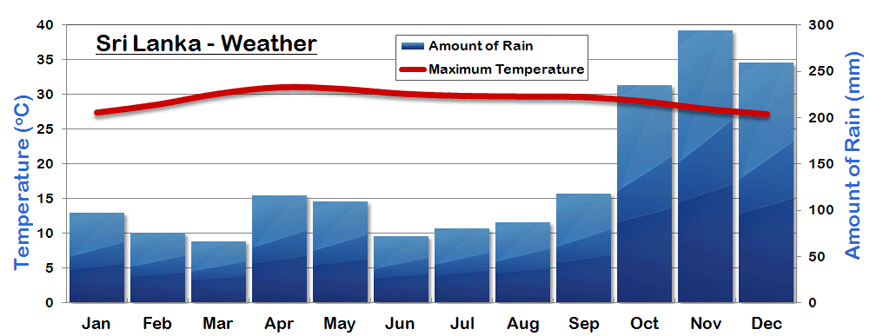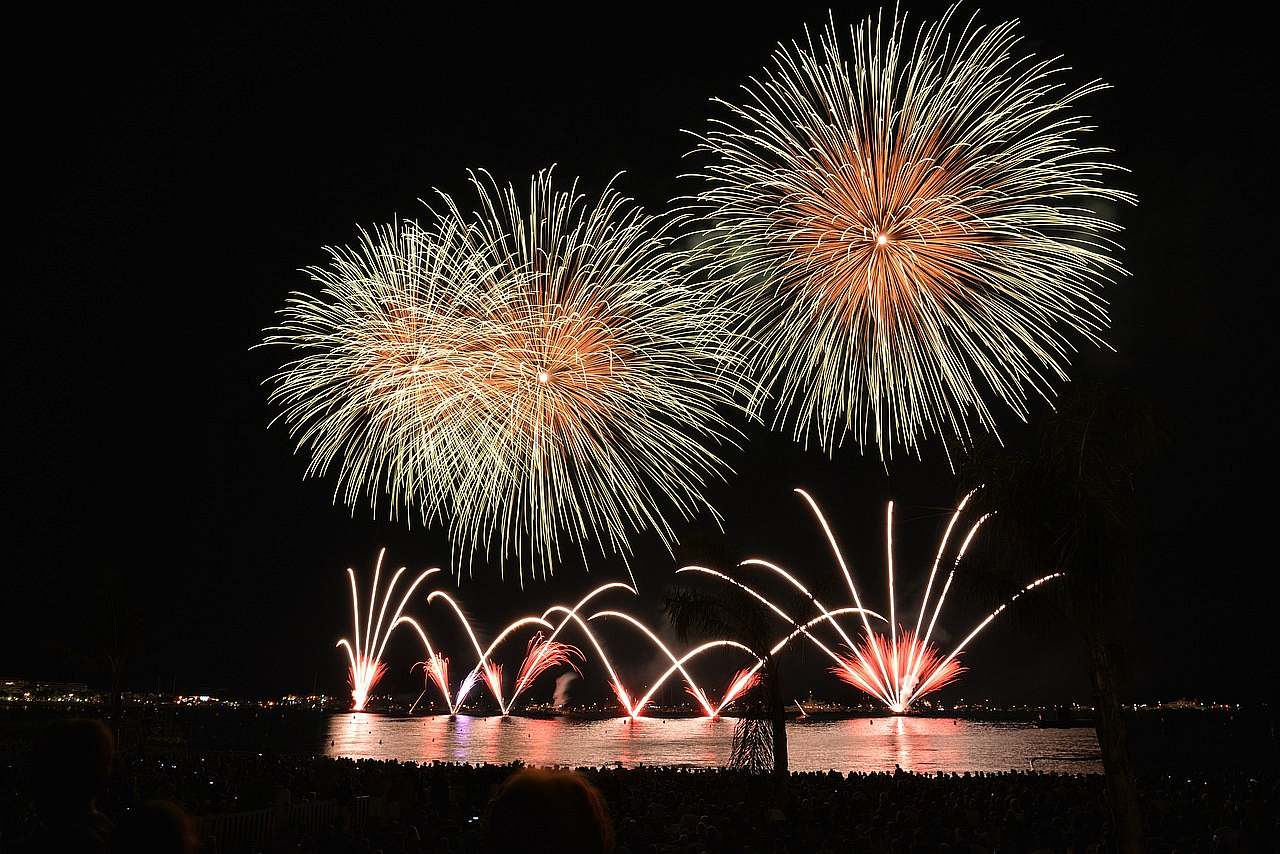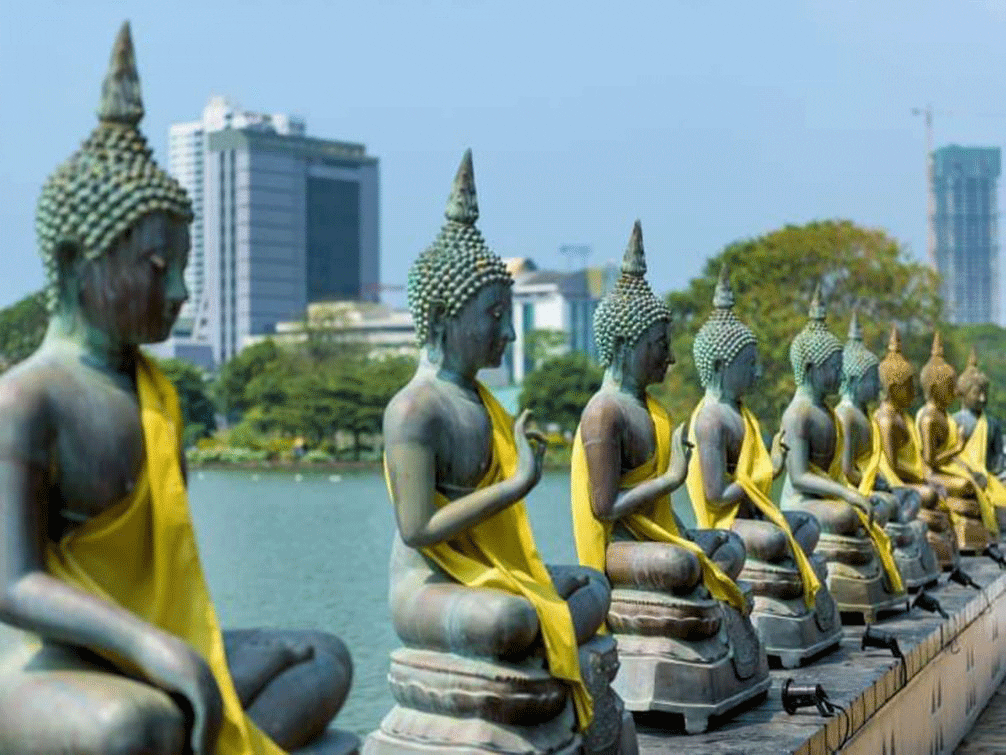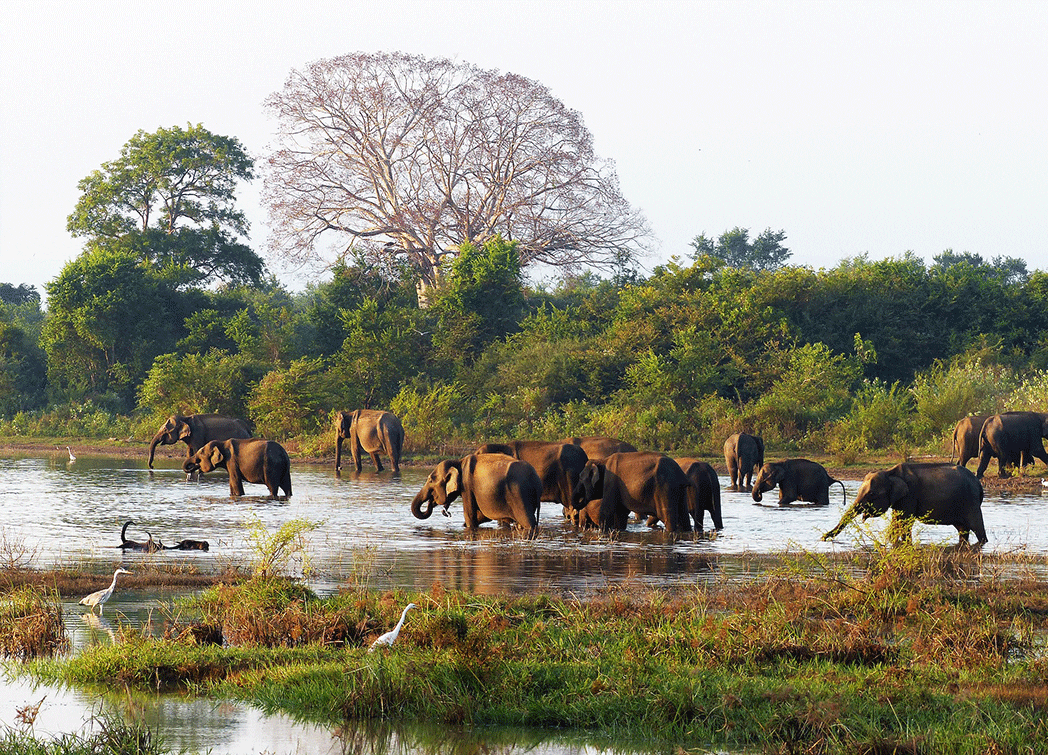Table of Contents
- When is the best time to visit Sri Lanka?
- Sri Lanka’s weather
- Normal temperature in Sri Lanka
- What is the best month to visit Sri Lanka?
- Travelling to Sri Lanka during the winter months of December through February
- How to schedule a trip to Sri Lanka in the spring and travel to Sri Lanka between March and May
- Where to go in Sri Lanka during the summer months of June to August?
- Normal precipitation and temperature
- Official Sri Lankan celebrations and festivals
- Sri Lankan festivities
When is the best time to visit Sri Lanka?
Due to the influence of two distinct monsoons, Sri Lanka’s weather is quite complex for such a small nation. Positively, this indicates that the island enjoys favourable weather conditions for the majority of the year.
When determining the best time to visit Sri Lanka, it is vital to remember that the basic weather pattern, which is described below, can vary significantly from year to year. Furthermore, it is true that global warming has disturbed these already complex weather patterns.
Sri Lanka’s weather
When does the monsoon season commence in Sri Lanka?
It goes without saying that the rainfall pattern will be one of the most important factors in determining when to visit Sri Lanka. The primary southwest monsoon, also known as the “Yala” monsoon, brings moisture to Sri Lanka hill country, west coast, and southwest coasts from May to late April.
The milder northeast (“Maha”) monsoon, which peaks in November and December, affects Sri Lanka’s east coast. It lasts through March.
Prior to the Maha monsoon, there was an intermonsoonal period of erratic weather in October and November. During this time, thunderstorms and significant precipitation could occur anywhere on the island.
Normal temperature in Sri Lanka
Due to Sri Lanka’s proximity to the equator, the country’s temperature remains relatively constant throughout the year. The lowlands and beaches of Sri Lanka have average daily highs between 26 and 30 degrees Celsius. During the warmest portion of the day, temperatures frequently exceed 30 degrees Celsius. As altitude increases, temperature decreases, with Kandy attaining a comfortable 18–22°C. The typical temperature in Nuwara Eliya and the island’s highest regions ranges from 14 to 17 degrees Celsius. At times, the evenings in the highlands can be quite cold, almost to the point of freezing. Almost everywhere, humidity levels are frequently elevated. It ranges from 60 to 80 percent on the remainder of the island, but can occasionally reach 90 percent in the southwest.
What is the best month to visit Sri Lanka?
In conclusion, the best time to visit Sri Lanka depends on where on the island you desire to go due to the island’s diverse weather patterns. If you are planning a trip to the west, south, or hill country of Sri Lanka, you should travel between December and March.
If you intend to travel to the east and north of Sri Lanka, April or May through September are the best months to visit.
Travelling to Sri Lanka during the winter months of December through February
At this time of year, the eastern coast and northern regions of the island are somewhat moist. Therefore, it is not the best time to visit Batticaloa, Trincomalee, Jaffna, or Arugam Bay for surfing. Visit Weligama on the south coast to capture some waves, or simply unwind on the beautiful beaches of Unawatuna Bay and Mirissa. At this time, whale watching off southern Sri Lanka is also superb. Explore the picturesque fort town of Galle, which comes alive when the Galle Literary Festival begins in January or February. It is also an excellent time to visit Kandy and the hill region, which includes Adam’s Peak Climb and Horton Plains National Park. Christmas is a busy period, so make reservations in advance.
How to schedule a trip to Sri Lanka in the spring and travel to Sri Lanka between March and May
March is still magnificent in the south and southwest, but by April, the monsoon has begun to manifest its effects. However, it is a great opportunity to observe whales off the southern coast. Explore the less-visited northern regions of Sri Lanka, such as the Cultural Triangle, the eastern coast, and the bustling city of Jaffna. In May, the climate in the south is quite humid; if you prefer a milder climate, head to the hilly region. The most important Buddhist festival in May is Vesak Poya, which is a celebration of the birth, enlightenment, and death of the Buddha.
Where to go in Sri Lanka during the summer months of June to August?
The hill country is pleasant and milder, but you never know when it might rain. This is the ideal time of year to discover the Tamil culture of Jaffna and the surrounding islands, as well as to experience the Jaffna Peninsula outdoors. The beaches on the east coast are equally alluring. The grandest festival in Sri Lanka, the Esala Poya Perahera in Kandy, occurs in July or August. Not to be missed.
September through November are the optimal times to visit Sri Lanka in the autumn.
September continues to deliver pleasant weather to the eastern and northern regions of the island. During the months of October and November, the island experiences erratic weather with the possibility of precipitation everywhere. This is due to the fact that the month occurs between the main monsoons.

Normal precipitation and temperature
We’ve compiled an average rainfall and temperature chart. This should provide a general idea of the type of weather to expect in Sri Lanka during any given month. In order to provide a comprehensive overview and assist you in determining the best period to visit Sri Lanka, we have analysed three distinct regions. We have visited Colombo on the island’s western coast, Nuwara Eliya in the highlands of central Sri Lanka, also known as tea country, and Trincomalee on the island’s northeastern coast.
Official Sri Lankan celebrations and festivals
Each of the four main religions has its own list of festivals, and there are a staggering 25 public holidays. You may wish to integrate one or more of these festivals into your Sri Lanka itinerary or plan your travel dates to coincide with them, given that these events tend to bring a halt to all activity.
The vast majority of celebrations have a religious focus and are based on the lunar calendar, which adds one month every two or three years in Buddhism to keep the solar and lunar calendars synchronised. As a result, the dates of the majority of festivals vary marginally from year to year. Similarly, Muslim holidays adhere to the lunar calendar, but because there are no correction months, the dates of these holidays advance over time.
On the island, the most important Buddhist holidays are traditionally celebrated with enormous parades called peraheras. They have a large number of magnificently decorated elephants under the direction of drummers and dancers. On poya days, transportation and lodging are typically crowded due to the high volume of travellers; alcohol sales are ostensibly prohibited, yet most guesthouses and tourist hotels will nonetheless serve you.
The primary Hindu festivals in Sri Lanka are as colourful as the Buddhist celebrations on the island; in addition to those listed below, there are numerous local Buddhist temple festivals, particularly in the north. Typically, the Muslim holidays in Sri Lanka are subdued celebrations that primarily involve the Muslim community and include special prayers at the mosque. Id ul-Fitr, which marks the end of Ramadan; Milad un-Nabi, which celebrates the Prophet’s birthday; and Id ul-Allah, which signals the beginning of Mecca pilgrimages, are the three primary festivals. All three occasions are considered holidays.
Sri Lankan festivities
On January 14, Duruthu Poya, a grand parade is conducted at the Raja Maha Vihara in the Kelaniya neighbourhood of Colombo to commemorate the first of the Buddha’s three fabled visits to Sri Lanka. Additionally, Duruthu Poya marks the beginning of the three-month pilgrimage season to Adam’s Peak.
Thai Pongol is a Hindu festival that honours Surya, the bovine, and Indra, the bringer of rain, in no particular order. As part of Hindu temple celebrations, the first grains of the fresh paddy harvest are ceremonially cooked in milk in a special pot; the direction in which the boiling liquid descends is believed to portend good or bad fortune for the coming year. February 14-15
Festival of Literature in Galle Both domestic and international writers and cultural scavengers converge on Galle. Mid-February/late January
February Navam Poya is a large festival celebrated at the Gangaramaya temple in Colombo to commemorate the eighty-year-old Buddha’s announcement that he was going to die. This celebration, which has only existed on the island since 1979, has become one of the largest on the island and features a procession of approximately fifty elephants.
Independence Day commemorates Sri Lanka’s independence on February 4, 1948, with parades, dancing, and sports.
Maha Sivarathri is a Hindu festival honouring Shiva, during which devotees keep a 24-hour vigil and a one-day fast. February or March
On March 12, Medina Poya commemorates the Buddha’s first visit to his father’s palace after attaining enlightenment.
Good Friday On the island of Duwa, near Negombo, there is a performance of the Passion of Christ on Easter. April and March
Jaffna/Galle Music Festival is an annual three-day music festival that alternates between Galle and Jaffna. It features an incredible lineup of regional and international folk musicians, dancers, and other performers.
On April Bak Poya, the second visit of the Buddha to Sri Lanka is celebrated.
Hindu and Sri Lankan New Years, The Buddhist and Hindu New Years are family celebrations that coincide with the start of the southwest monsoon and the conclusion of the harvest season. During this period, gifts are exchanged and traditional kiribath (rice cooked with milk and cut into diamond shapes) is prepared. Businesses close, horoscopes are cast, rituals are performed, and new clothing is worn. New Year’s Day is April 14; New Year’s Eve is April 13.
May Day is observed as a standard bank holiday. (During May)
It is believed that the Buddha’s birth, enlightenment, and death all occurred on the day of the Vesak Poya, making this the most important of the Buddhist poyas. Moreover, it is claimed that the last of the Buddha’s three alleged visits to Sri Lanka occurred on a Vesak poya day. Throughout the nation, lamps are illuminated in front of homes, and pandals adorned with scenes from the life of the Buddha are constructed. Buses and cars are decorated with streamers, and roadside stalls (dansal) serve complimentary meals including rice, curries, and Vesak sweets. In the interim, Buddhists practise fasting, meditation, and temple visits. The day following Vesak Poya is also a public holiday. Additionally, the season of pilgrimages to Adam’s Peak concludes on Vesak. During the six days preceding Poya Day, restaurants are prohibited from selling wine, meat, and fish. However, hotels and inns may be exempt from this rule if they serve their own consumers.
Poson Poya, which is second in importance only to Vesak, commemorates Mahinda’s introduction of Buddhism to Sri Lanka and is commemorated with large-scale pilgrimages to Anuradhapura and the ascent of Mihintale by thousands of white-robed pilgrims.
July is Esala Poya, a celebration of the first sermon of the Buddha and the advent of the Tooth Relic in Sri Lanka. Festivals abound during the lunar month of Esala, particularly the grand Esala Perahera at Kandy, which is the most lavish celebration in Sri Lanka. Additional celebrations occur in Bellanwila, a southern enclave of Colombo, Dondra, and Kataragama. Unawatuna stages a seven-day festival that attracts tens of thousands of people to the village and beach. In Kataragama, Hindu devotees engage in numerous self-mutilation rituals, such as firewalking, piercing their flesh with hooks and weights, and inserting skewers through their mouths and cheekbones.
Hikkaduwa Beach Festival is a three-day beach party conducted by international DJs. July and August
The most important Hindu festival in Colombo is Vel, which honours Skanda/Kataragama and features two flamboyant processions that convey the god’s chariot and vel (spear) from the Pettah to the temples at Wellawatta and Bambalapitiya. July and August
Nikini Poya, observed by monastic communities as a time of fasting and seclusion, commemorates the Bhikkhus’ retreat following the death of the Buddha.
The Buddha’s ascent to heaven to deliver a sermon to his mother and other deities is commemorated at Binara Poya.
The Durga Puja This Hindu holiday, also known as Durga Puja, honours Durga and commemorates Rama’s victory over Ravana. Oct./Sept.
On October Vap Poya, the end of the Buddhist fast is commemorated.
The Longavali The Hindu Festival of Lights, comparable to Diwali in Northern India, celebrates Rama’s return from exile as the protagonist of the sacrosanct Ramayana. In Tamil households, the lighting of lamps represents the triumph of virtue over evil, and new clothing is worn. (Late October/August)
World Spice Culinary Celebration Colombo hosts ten days of food-related events at various locations. (Late October/August)
On November Ill Poya, the Buddha is commemorated for ordaining sixty disciples.
December is Unduvap Poya, the commemoration of Ashoka’s daughter Sangamitta’s arrival in Anuradhapura with the Bo tree sapling.
Day off (December 25)
December 31 is New Year’s Eve for Christians.




